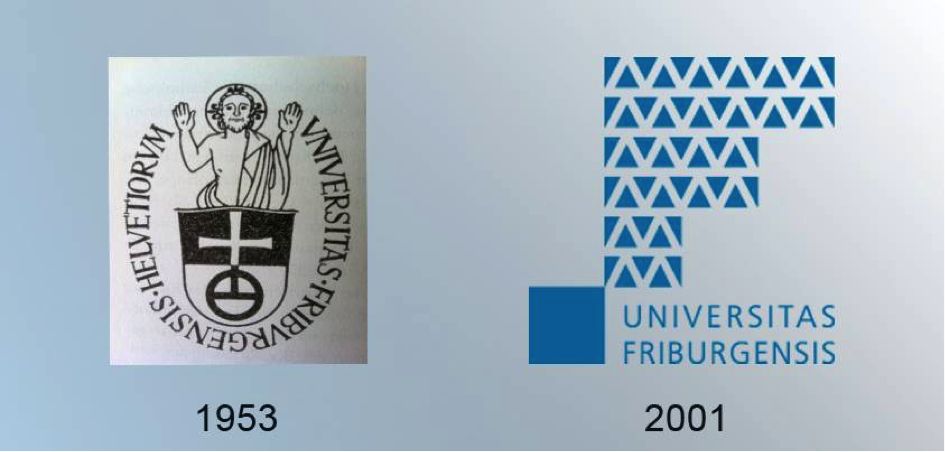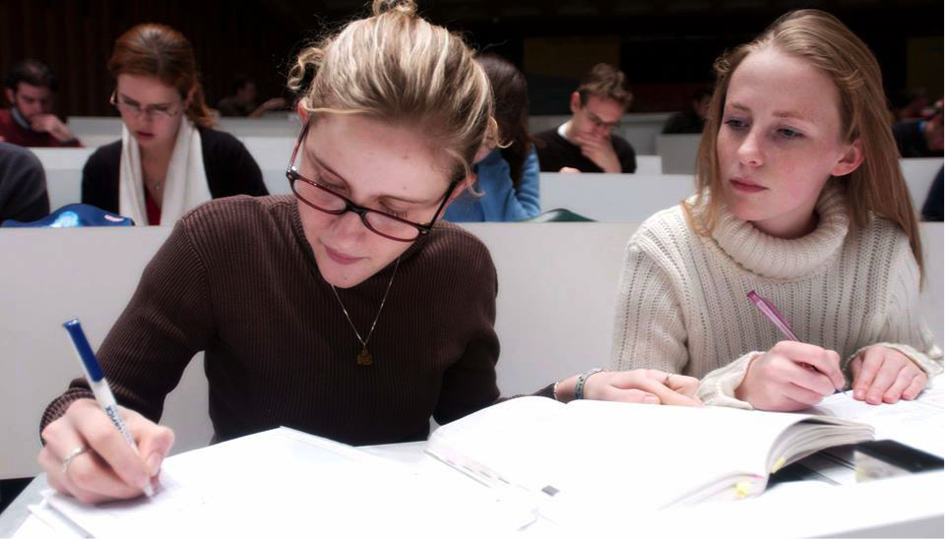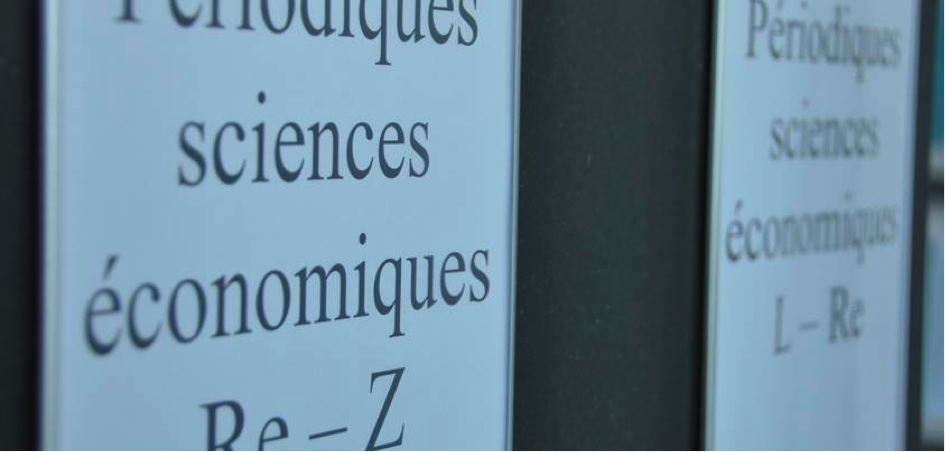History
2013
Corporate Design
Since the middle of October 2013 the University of Fribourg has been facing the world with a fresh new visual image. Even after 125 years, the Alma Mater remains true to its identity which is characterised by its long tradition, bilingualism, internationality, its high academic standards and the principle of always putting people first. Its revamped visual appearance is designed to underscore the University’s identity and make it easier to see the University as a whole, the main focus being on its performance and offerings.
28th October 2005
Pérolles 2 is inaugurated
In the autumn of 2005 the Faculty of Economics and Social Sciences as well as the Institutes of Information Technology and Sport move into a new building. 6 years before, the voting public of Fribourg agreed to the Pérolles 2 building project by the significant majority of 83.7%.

15th October 2001
New logo
In 2001 the University of Fribourg receives a new face. Under the direction of Rector Paul-Henri Steinauer a new logo is introduced which replaces the old one dating from 1953 with its half-length figure of the enthroned Christ as Judge of the World.

15th October 1998
In the 1998/1999 academic year there are, for the very first time, more women (56.6%) than men studying at UNIFR. In conjunction with the general increase, the proportion of women students has been rising markedly since the beginning of the 1960’s: between 1955 and 1975 it leaps from 7.3% to 24%. In 2012 women students make up around 60%.

1st August 1989
Formation of the Faculty of Economics and Social Sciences
The Department of Economics and Social Sciences leave the “Faculty of Law, Economics and Social Sciences” in 1989 to become a new and independent faculty of their own.

1971
University Crèche
The crèche is established with the help of the “Vereinigung der Schweizerischen Akademikerinnen“ (Association of Swiss Women Graduates). To begin with, the University places several rooms in the Student Centre at their disposal, but the demand is so strong that, later on, available buildings are fitted out and leased by the University. From 1994 on, additional space is added outside the campus.
Mai 1965
Inauguration of a refectory
In May 1964, on the initiative of the AGEF (General Association of Fribourg Students), 2,000 students take to the streets to demand their own refectory. 10 months later a temporary refectory is established and finally, in 1982, the refectory in the Miséricorde rises above the train tracks.

(Photo: "Vacuus venter non studet libenter"; from: 1889-1989 Histoire de l'Université de Fribourg, 1991)
1941
Inauguration of the Miséricorde main building
After 4 years of construction, the University finally acquires a new main building on the site of the former city cemetery (hence the name Miséricorde). Because of the University’s rapid growth in the first third of the 20th century, students and academic staff had to battle with lack of space for a long time. The innovative architectural design was the idea of Denis Honegger (a student of Le Corbusier) and was carried out in collaboration with the Fribourg architect Frédéric Dumas. From a modern perspective, Auditorium C is quite remarkable, since it was originally a completely separate building (see the lower section of the photo)!

(Photo: Miséricorde main building after completion, from: Urs Altermatt, Die Universität Freiburg auf der Suche nach Identität, 2009)
1938
Promotion of University sport
With the founding of the Academic Sport Commission and the Senate’s Sport Commission the University takes an important step forward in furthering the “physical education” of its students. In 1942 the sports program offers gymnastics, track and field athletics, fencing, tennis, shooting, swimming, football and handball. Gradually over the next decades further types of sport are added, depending on trends at the time.

(Photo: Miséricorde Gymnasium, from: 1889-1989 Geschichte der Universität Freiburg Schweiz, 1991)
June 1910
Construction of the University Library
After a construction phase lasting 3 years, the new Canton and University Library is officially inaugurated in 1910. It was designed by the Bern architects W. Bracher and F. Widmer. In the 1970’s the first extension is built to accommodate the steadily increasing demand for space.

(Photo: Project sketch of 1906, from: 1889-1989 Geschichte der Universität Freiburg Schweiz, 1991)
1907
The first female students
In 1907, for the first time, three women enrol at the University of Fribourg. Up until 1905/06, no women were admitted. In 1910/11 the student body includes seven women. Before the beginning of the 1960’s there is only a slow increase in the numbers of female students.
The first female students come from Luxembourg, Ireland and Galicia. The first Swiss female students are from Fribourg and Lugarno and follow in the winter semester of 1907/08.
16th November 1896
Founding of the Faculty of Mathematics and Science
The Faculty of Mathematics and Science begins its work in a former railway rolling stock factory on the Pérolles plateau. Of the eleven full professors in 1896/97, four come from Germany, three from France and one each from Poland, Holland, Austria and Switzerland (Fribourg). In the first semester, the Faculty has 29 students. In the second there are already 50.

4th October 1889
Founding of the University of Fribourg
The Grand Council of the Canton of Fribourg resolves to bestow on the City Council the power to set in motion the “provisional opening of one or other university faculty”. ("1889-1989 Geschichte der Universität Freiburg Schweiz", 1991) The driving force behind the founding of the University is the Fribourg Councillor Georges Python. The winter semester of 1889/1890 begins on 4th November 1889 with lectures in the Faculty of Humanities and Jurisprudence, attended by 29 students. At Easter in 1890 the Faculty of Theology follows with its program of studies.

1763
Academy of Jurisprudence
The Age of Reason brings forth renewed efforts in the Catholic areas of Switzerland to counter the lack of education. With the founding of an Academy of Jurisprudence in 1763, the first step is taken towards a university.

